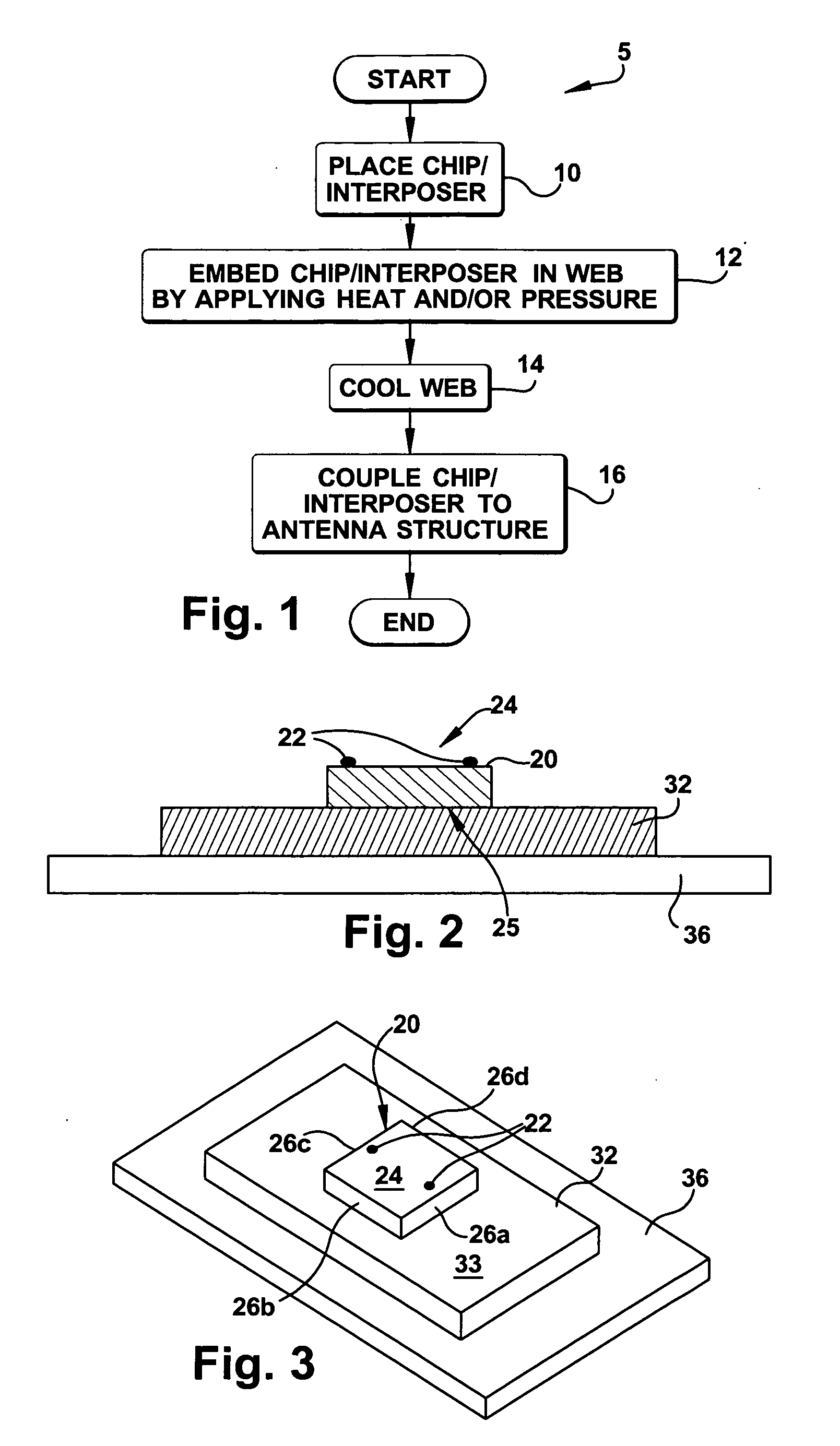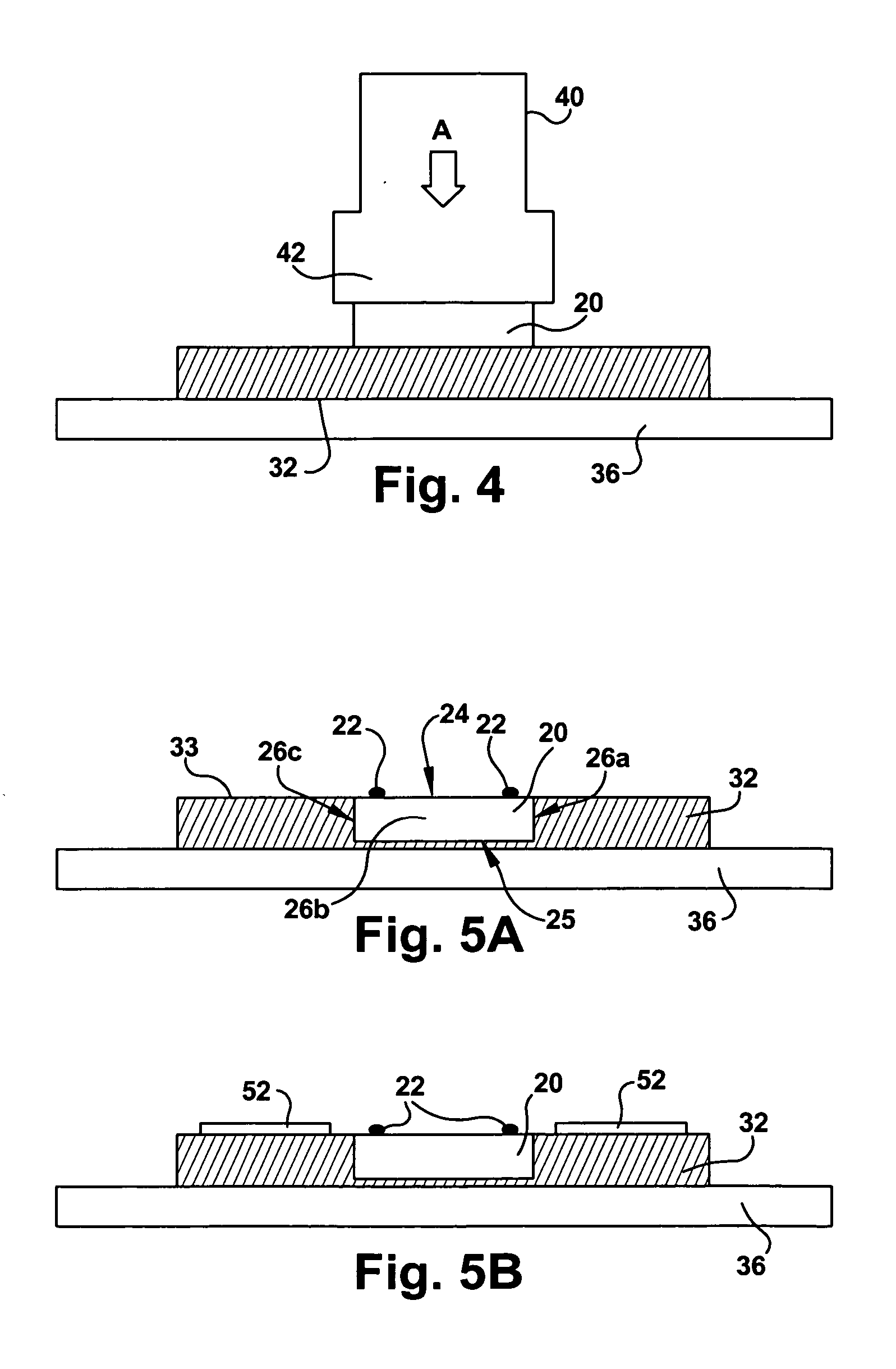Electrical device and method of manufacturing electrical devices using film embossing techniques to embed integrated circuits into film
- Summary
- Abstract
- Description
- Claims
- Application Information
AI Technical Summary
Benefits of technology
Problems solved by technology
Method used
Image
Examples
Embodiment Construction
[0055] A method of manufacturing electrical devices is provided wherein a chip or other electrical component is embedded in a substrate. The substrate may be a thermoplastic material capable of deforming around the chip when heat and / or pressure is applied to the substrate. The substrate may include a compressible layer that can be compressed to form a recess into which the chip can be inserted. Once embedded, the chip or electrical component is secured to the web and may be coupled to another electrical component. A method of manufacturing an RFID device is also provided wherein an RFID chip is embedded in a substrate using heat and / or pressure, an antenna structure is applied to the substrate, and the RFID chip and antenna structure are coupled together.
[0056] Referring to FIG. 1, a method 5 of manufacturing electrical devices in web format will be described. It will be appreciated that the electrical devices may be devices other than RFID devices. Similarly, other electrical com...
PUM
| Property | Measurement | Unit |
|---|---|---|
| Temperature | aaaaa | aaaaa |
| Pressure | aaaaa | aaaaa |
| Electrical conductor | aaaaa | aaaaa |
Abstract
Description
Claims
Application Information
 Login to View More
Login to View More - Generate Ideas
- Intellectual Property
- Life Sciences
- Materials
- Tech Scout
- Unparalleled Data Quality
- Higher Quality Content
- 60% Fewer Hallucinations
Browse by: Latest US Patents, China's latest patents, Technical Efficacy Thesaurus, Application Domain, Technology Topic, Popular Technical Reports.
© 2025 PatSnap. All rights reserved.Legal|Privacy policy|Modern Slavery Act Transparency Statement|Sitemap|About US| Contact US: help@patsnap.com



